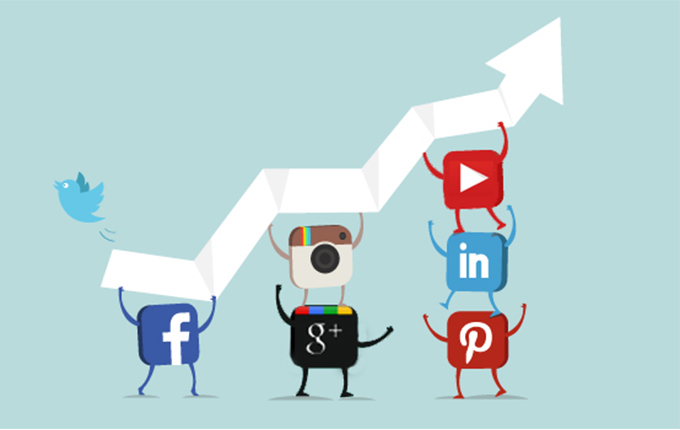We know that the objective of private healthcare is to improve the functioning of health and to increase the benefits within the sector. Thedigital marketing in the health sector can be a good complement to the work done by health professionals, centers, clinics, offices and hospitals.
In today’s post we will talk about how digital marketing is growing in the health sector and what motives are driving the health sector to invest.
For this reason, it is necessary that professionals in the sector are interested in digital health strategies. Clinics that are committed to digital marketing are on the rise and there are many centers and mutuals, which have carried out online actions to improve their economic results.
It is perfectly compatible to offer a good quality of medical assistance with applying digital health marketing techniques. In many sectors such as Orthopedics or Parapharmacy the results obtained are very beneficial.

So far we know that the technique of “word of mouth” works, but the perfect complement to amplify our product will be the digital marketing actions that allow us to reach more customers. Pharmacies, clinics or health centers must differentiate themselves because their product, equipment and even price proposals have great similarities.
The health sector must understand that the patient has changed and that people seek health information on the Internet. People conduct more Google searches than visits to the pharmacy, clinic or medical center in question. Google is asked more than health professionals, according to statistical data 48% of users use the Internet to acquire health information.
Health professionals must understand changes in the mentality and behavior of the patient when consuming products and services. The digital field allows offering, among many other options, health care services and booking appointments 24 hours a day, applications that clarify treatments, personalized information … This provides an added value to the patient and a competitive advantage within the sector.
The Internet talks about health and the opinions generated in a blog or social networks can decide the choice on the part of the patient. Therefore, the health sector is entering the field of digital marketing. Do not stop getting on the train!
Now more than ever, it is almost essential that clinics, medical centers and health providers align their strategies and communication towards online marketing, working on their health content and social media actions aimed at their patients and clients. The numbers show that 34% of consumers use social networks to search for health information, both to prevent and to know that they have possible symptoms.
The demand exists since hundreds of thousands of users are looking for an answer on the internet and end up accepting the response of another unidentified user, and in most cases, not professional. Faced with this reality, there is a clear opportunity for the different health service companies that want to achieve their business objectives. From Medics Marketing we want to give 5 examples of how to take advantage of social media for clinics and medical centers to increase their benefits and improve their value chain:
1. Procedures in real time via Twitter
The Henry Ford Hospital became one of the first hospitals that from an operating room communicated in real time the different procedures that were applied in a kidney operation. Physicians, medical students and curious nonmedical personnel were able to continue as surgeons updated with tweets the surgery of the kidney to eliminate a cancerous tumor.
This health marketing tactic aimed to create excitement and increase public awareness of a healthcare organization. The action of the Hospital, made Twitter a hotbed with users re-tweeting the messages of Henry Ford and reviewing and asking about aspects related to the operation. The echo generated by these social media actions helps health companies both attract new patients and locate potential medical personnel to incorporate into their staff, all thanks to the qualitative traffic achieved with online action.
2. Give more tools to medical personnel
Some health clinics are beginning to see the potential of social media in their processes. Lee Aase of the prestigious Mayo Clinic incorporated different social media in a presentation before the American Heart Association. During the presentation, Aase took advantage of Twitter to encourage participants to participate and contribute to the discussion through the hashtag.
Implementing social networks in health care training initiatives can provide multiple benefits, including:
- Give participants a forum to ask questions and receive answers in real time.
- Provide a posteriori and personalized marketing material to all attendees who are interested in receiving more information.
- It allows complementing the health marketing efforts through the exchange of slides, video or images of the training sessions in different social channels such as YouTube or Flickr.
- Communicate what happens in these training sessions on social networks such as Facebook or Twitter, as well as in the clinic’s own blog, medical center or hospital helps patients and future clients to perceive a brand value and a determining service to contract their services.
3. Optimize the relationship with the media
Currently more than 70% of journalists use social networks to disseminate their content. These significant data should be taken advantage of by the online marketing strategies of health companies, using social media to cover the media and sector publications on their services and advances in health.

Companies in the clinical sector should use online channels – including blogs, forums and microblogs – to share success stories of operations or treatments, medical research or other significant achievements out of the ordinary. For example, when Aurora Health Care Twitter had a knee operation in April, it received media attention from both the media and industry publications, including Good Morning America, the local public radio station Milwaukee, and the journal Hospitable Management.
4. Communicate in times of crisis
When a disaster occurs – be it a flood, an earthquake or a terrorist attack – hospitals and health providers are at the center of everything. Health providers can take advantage of social networks to provide updates in real time, both for people directly affected by the crisis and those who observe from afar.
During the Fort Hood massacre, Steven Widman of Scott & White Healthcare – one of the hospitals that treated the victims of the shooting, used Twitter to provide news in real time. Through Twitter, Widman offered updated information on access to the emergency room and the operating status of the hospital, news of the Red Cross and communicated with journalists.
Some of the results in cache of this case of online social media crisis communication:
- Twitter followers increased 78% in just three days
- Scott & White Healthcare appeared on the first page of Twitter as “trending topic”
- The hospital’s YouTube channel was ranked as the most-watched non-profit channel throughout the week surrounding the crisis.
5. Provide accurate information to patients
73% of patients seek medical information on the internet before or after visits to the doctor. With the magnitude of health information available on the web, sometimes professional sometimes not, it is likely that these patients can easily be misinformed.
By integrating social networks into the marketing mix of health companies, you can share timely and accurate information about symptoms, diseases, medications, treatments and much more. There are forums for patients to share their health problems and questions about treatment with other patients, as well as qualified medical personnel. Even some of these forums are associated with trusted nonprofit health organizations to ensure that the information is accurate and their community is safe.
The benefits of integrating social media into the health marketing strategies of clinics or medical centers, not only has no price in terms of attracting traffic and positioning, but it is beginning to be the reason for the success of many companies in this sector.







